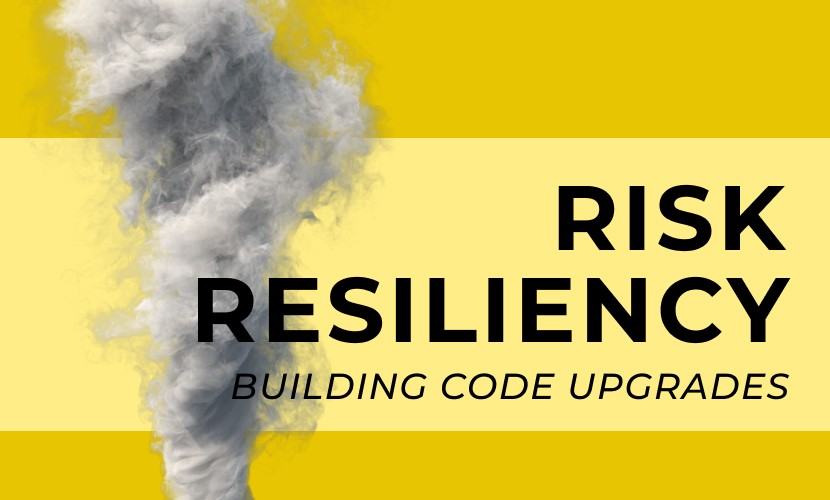The increase in frequency and severity of climate hazards – from hurricanes to tornadoes, hail, flooding, and wildfires – has renewed the focus on resiliency efforts so that communities can better weather these events. Safeguarding communities against natural disasters requires up-to-date hazard-resistant building codes to reduce casualties, costs, and property damage.
Mitigate Property Damage, Reduce Costs
Modern building codes play an important role in disaster resistance. They establish the standard for the safe design and construction of structures to withstand natural hazards, including the effects of climate change.
According to AtkinsRéalis, a design, engineering, and project management organization, designing to the current International Building Code (IBC) and International Residential Code (IRC) in the United States has resulted in an $11 savings for every $1 invested. Communities that have embraced up-to-date building codes are already saving an estimated $1.6 billion per year in averted damage from major hazards, with a total savings of $132 billion forecast through 2040, a figure that is expected to rise as more communities adopt them. However, according to the Federal Emergency Management Agency (FEMA), as of November 2020, only 35% of counties, cities, and towns across the country have adopted the latest building codes.
To illustrate how robust building codes can save a community and mitigate the impact of wind and rain damage, take a look at what happened after Hurricane Ian hit the Southwest Florida coastline in 2022. In the aftermath of Ian, there were 500,000 claims with estimated losses of $4.5 billion, according to the Florida Office of Regulation. One exception to Hurricane Ian’s devastation was the coastal city of Punta Gorda. Several homes and buildings were left intact, to the surprise of many. These structures survived because they were built based on updated building codes after 2004, when Hurricane Charley devasted the area.
Another example of disaster resilience due to planning and strong building codes is the community of Babcock Ranch, which is 19 miles east of Punta Gorda and was minimally impacted by Hurricane Ian. Babcock Ranch was a community designed with climate resilience as its basis. To minimize flood damage, the town is situated at 30 to 40 feet above sea level, well above regionally projected storm surge heights. Nearby coastal towns, such as devasted Fort Myers, were built as low as six to 12 feet above sea level. Flooding comes not only from the ocean during hurricanes but also from rain, which can be deadly. Flooding from heavy rains during Ian in Babcock Ranch was minimized by streets and landscaping designed to move water away from homes.
It makes sense for cities and communities to enact new codes and for developers, designers, and builders to learn about and embrace more robust construction products and principles. For example, strong building codes ensure that structures in hurricane- and tornado-prone areas are built to resist strong wind, by requiring key features such as solid wall and roof connections. In earthquake-prone areas, codes requiring structures be fastened to foundations and mandating structural reinforcements to withstand ground movement can help prevent losses.
While it is true that complying with strict construction regulations is not always inexpensive, the money invested in code compliance has often proved to be worth the initial investment in avoiding damage when disaster strikes.
Note: Please review the applicable state and federal statutes, rules, and regulations for further information and compliance.
Sources: AtkinsRéalis, FEMA GEI Consultants
